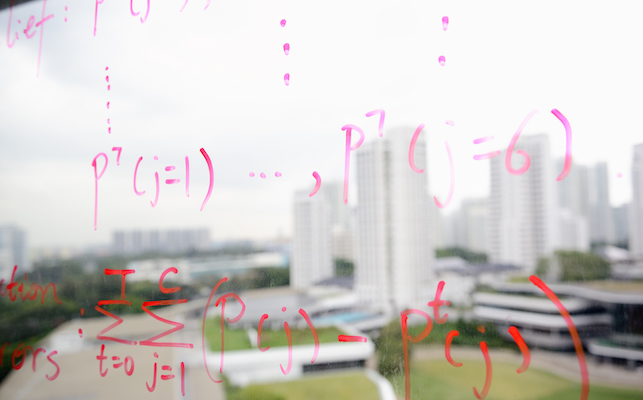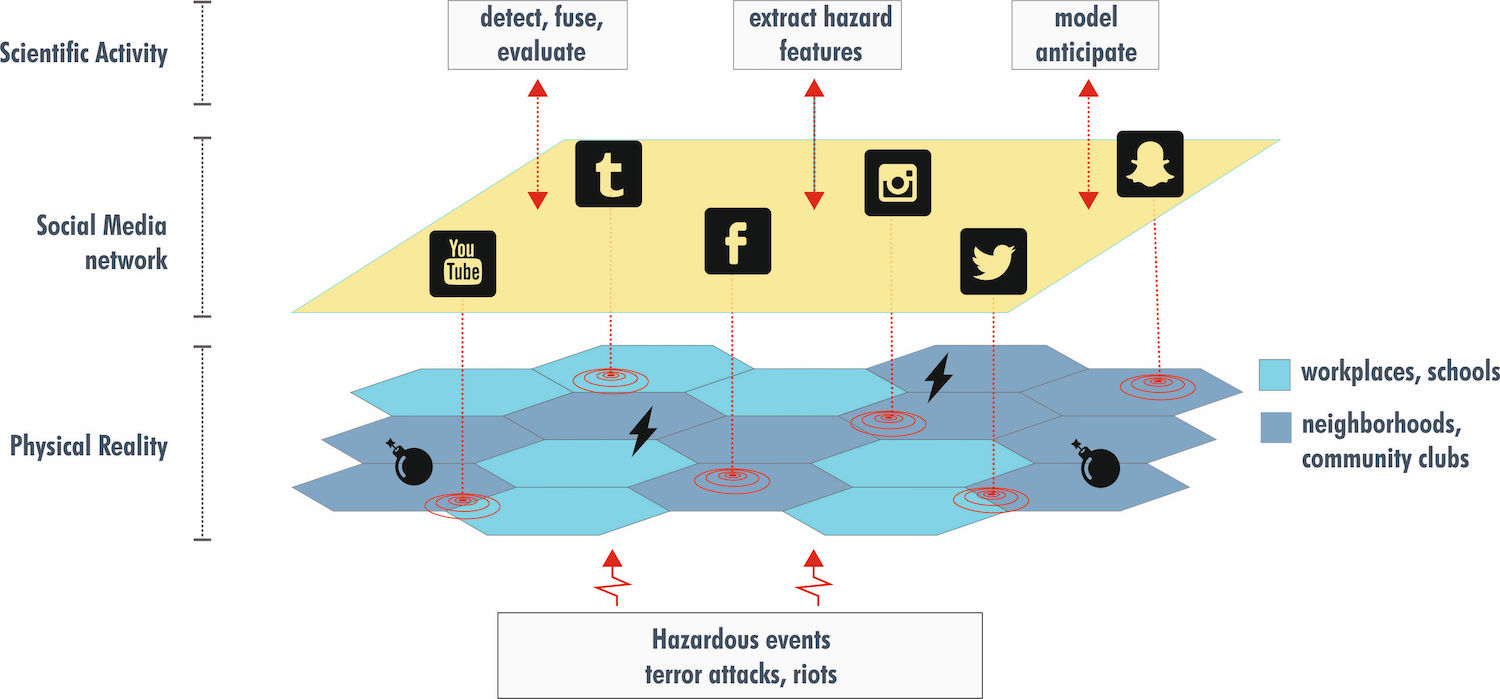Automated Hazard Detection for Social Resilience

Enabling automated hazard detection, enhanced situational awareness, modelling and forecasting based on social and online media
Hazardous events such as terrorist attacks, utility failure, infectious disease breakout, and natural disasters have negative social, political, security, and environmental impacts on communities. Unfortunately, the frequency and severity of hazardous events has increased over the past several decades.
The objective of this research module is to improve social resilience by automating the detection of hazardous events and extraction of facts. The prompt detection of hazards and fast extraction of their features will improve situational awareness and help individuals, families and communities adapt to hazards. The availability of relevant tools and information will also support decision making in the prevention or mitigation of negative impacts of hazards, as well as rapid recovery.
Today, social media is increasingly used for hazardous event detection and communication, as seen in the use of Twitter for sharing information during the 2011 earthquake in Japan and the investigation by the U.S. Geological Survey (USGS) on the use of Twitter for earthquake detection. While an earthquake leaves a strong trace on social media, most hazardous events are classified as “weak signals”, which are naturally more challenging to detect and are barely reported in literature.
In this module, researchers employ artificial intelligence (AI) to develop a system capable of automatically detecting hazardous events from both strong and weak signals from multiple sources including social media, online sources such as news sites, as well as mobility data. An integrated approach will combine various AI techniques including knowledge engineering, machine learning, natural language processing, and information fusion.
Beyond detection, the system will also be able to extract "hard" facts such as location, date, time, and casualty; and “soft” facts such as public reaction and sentiment. These could serve as inputs for the trustworthy evaluation to determine the authenticity of the hazard, and model and forecast development of the event for informed decision-making on prevention, mitigation and recovery.

Expected outcomes
1. Develop methods and algorithms for detecting hazardous events based on weak signals on social media and other online sources
2. Develop methods and algorithms for trustworthiness evaluation, which is capable of combining heterogeneous information, including geolocation of social media data and its consistency with the location of a reported event, the originality of the post, the originality of attached images, etc.
3. The trustworthiness evaluation will be used to model and forecast development of the event and enable governments to make informed decisions for the prevention or mitigation of negative impacts of hazards, as well as rapid recovery.
4. Develop a software that is based on the implementation of all the algorithms and integrate the software in a modular platform
5. Build a data repository of hazardous events
